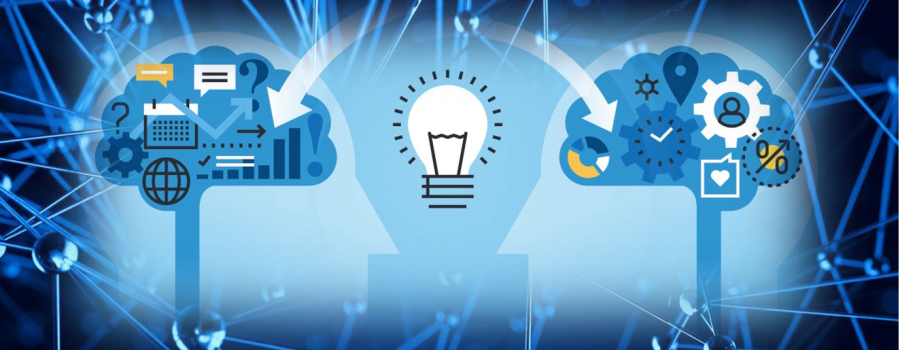Solutions beyond products

Share on Facebook
Visit us at clickom.ca
Follow Clickom here

Previously posted articles
- 2018 February 15: Another reason to adopt artificial intelligence
- 2018 January 15: Le métier d'agriculteur pourrait disparaitre d'ici 2024
- 2017 December 12: Net Neutrality: Etes-vous concernés?
- 2017 November 15: Ethics in Artificial Intelligence
- 2010 November 15: Identity theft...
- 2010 April 30: Another one...
Early this year, financial markets plunged at the least expected time: On Monday February 5, Dow Jones industrial average collapsed 700 points in 20 minutes. Experts, traders and analysts teamed up and coalesced around an increasingly routine explanation: Blame the machines1. Indeed, it was generally admitted that computers systems, which already accounted for about 60% of stock trades in 2017 (according to JP Morgan), initiated the "correction". The US Treasury Secretary, Steven MNUCHIN, stated that algorithmic trading "definitely had an impact" in Monday's 1,175-point Dow drop. However Tuesday's trading also showed just how quickly the algorithms can jostle the markets and disappear: The Dow closed up 567 points. The Vanguard Group, like BlackRock, is employing machine learning across the company to serve clients better2. Similarly, J.P. Morgan Asset Management, also applies machine learning across its investment strategies, including the development of customized target-date funds for defined contribution plans3.
In fact, our point in this article isn't about trading and, before stating it, let's explore how AI (Artificial Intelligence) impacts another field of expertise.
Nowadays, lawyers are very reactive; someone has an issue, and a lawyer researches it using books and databases. There is obviously an opportunity here for a more proactive experience. Therefore, we see more and more AI powered solutions carry out legal tasks, such as reviewing documents, analysing contracts, performing legal research and, predictive case outcome. In fact, the lower-level tasks currently performed by students, junior lawyers or newer lawyers are being taken on by technology4. According to the Harvard Journal of Law & Technology, a consensus has emerged that AI will significantly disrupt the legal market. AI will impact the availability of legal sector jobs, the business models of many law firms, and how in-house counsel leverage technology5. Deloitte claims 39% of legal jobs can be automated while McKinsey Global Institute estimates that number to be 23%.
As evidenced by the above cases, AI enabled business solutions are taking over jobs, not only repetitive and low-skills ones, that were tradionaly performed by humans. Such systems have proven they can equal and sometimes over-perform human as dermatologists, radiologist, medical test and data analysts, pharmacists, car and truck drivers, and even programmers. Multiple studies have therefore documented that massive number of jobs are at risk in the next 5 to 10 years.
Already in 2016 at the WEF, it was agreed that changes in educational, learning environment and programs are necessary to allow people stay employed in the future. The challenge is to develop formal and informal educational and training programs, to be delivered to a significantly large number of individuals, providing them with both practical and analytical skills, which are needed to perform the jobs of the next decade and beyond.
Consequently, if you are planning to join a training program, or to be in the core of your career within the next 5-10 years, it may be worth exploring the impact of AI on your field of expertise. Also traditional education and training institutions, will have to update their programs to avoid mistakes we witnessed in the early days of computer sciences, where most mathematicians were pulled out from universities to fill computer engineers\’ roles in the industry, until we started missing mathematicians in the Universities, for research purposes. Developing AI enabled solutions, requires both research and business insight.
During previous industrial revolution, it often took decades to build the training systems and labour market institutions needed to develop major new skill sets on a large scale. In this case, it's simply not an option.
References, notes and comments:
(1) From the Washington Post – Drew HARWELL on Feb. 06, 2018.
(2) Stated by John T. MARCANTE, Managing Director, CIO & Vanguard's Information Security Team Manager.
(3) Stated by Jed LASKOWITZ, JPM's head of intelligent digital solutions.
(4) We recommend reading this article, found on Queen's University website.
(5) www.wevorce.com is one example: Clients fill in a form and provide information, then it uses algorithms to predict how the divorce will progress and then provides services to clients based on that prediction.
...by POMfils | Visit my blog | Send me an email at POMfils. | PDF version


